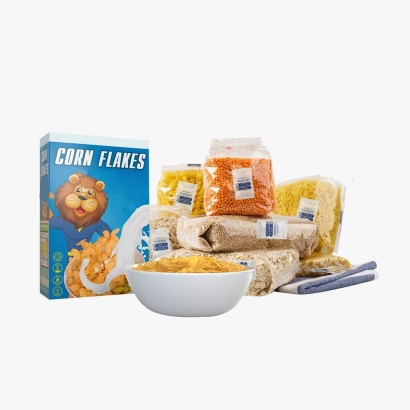
Oxygen absorbers for cereals and seeds packaging should be a must. At different levels of packaging, it can be utilized to prevent insect growth and damage from warehouses where the cereals and pulses are stored for the first time for the trade to the places where they are used for consumption, like in homes and restaurants. Oxygen absorbers for packaging cereals and seeds can eliminate Nitrogen Flushing and vacuuming, cut down the cost of packaging, and give a better feasible alternative. The trapped air during packaging causes the iron in the absorber to turn to rust, reducing oxygen. This process is called "oxidation". The transition in oxygen content develops a higher concentration of nitrogen, which is best for the long-term shelf-life of the packaged item. The absorber extends the shelf-life of foods up to three times.
While choosing packaging materials for cereal products, we should consider the significant aspects to look after of cereals, which are as follows. The packaging materials should withstand mechanical hazards during transportation and facilitate stacking several tiers high to optimize the use of available space. Cereals are mostly packaged with paper-based material made from fibres of wood. Micro flute grooved paperboards have distinctive properties, which include good strength attributes, excellent shock absorbing ability, pleasant aesthetic appearance, environmental advantages, and specific print properties. Whiteboard is considered good in contact with food and is usually coated with low-density polyethylene (LDPE), poly (vinyl chloride) (PVC), and wax. Many cereal-based products are loaded with paper-based materials. Films are also incorporated with other polymers or aluminium to obtain barrier characteristics or to impart heat scalability. Laminates are essential for expensive products like basmati rice, where the flavour preservation of the product is vital.

Many times, the exposure of cereals in the open-air results in sogginess. The crispiness and freshness get lost due to the presence of gases and water within the container. It can also lead to a change in the odour of the products and might get off-flavour, but by using oxygen absorbers for cereals and seeds packaging, we can prevent this activity from happening and keep the products fresh and safe.
It is crucial to have adequate measures like increasing the products' shelf-life, decreasing the container's water content, and preventing rancidity. Therefore, oxygen absorbers for cereals and seeds packaging will prevent the development of insect growth and rancidity. It would not damage products when the oxygen absorber is inserted into the food, as it is food safe and non-toxic.
Physical losses are caused by spillages, which occur due to the use of inadequate packaging materials.
Physiological losses include inhalation and heating in grains, temperature, humidity, and oxygen. The most fundamental modes of deterioration in cereal products are loss of crispness and lipid oxidation causing rancidity and off-flavours. Many cereal products are dry and contain lipids.
During storage or upon the opening of the package due to moisture uptake.
All the problems and factors lead us to conclude why an oxygen absorber or oxygen scavenger is essential and beneficial for the business and our domestic usage. Generally, products made from wheat, barley, rice, and maize have a longer shelf-life than those made from oats. The sensitivity of cereal products to lipid oxidation is associated with the concentration and kind of fat used and the number of unsaturated bonds in fatty acids.